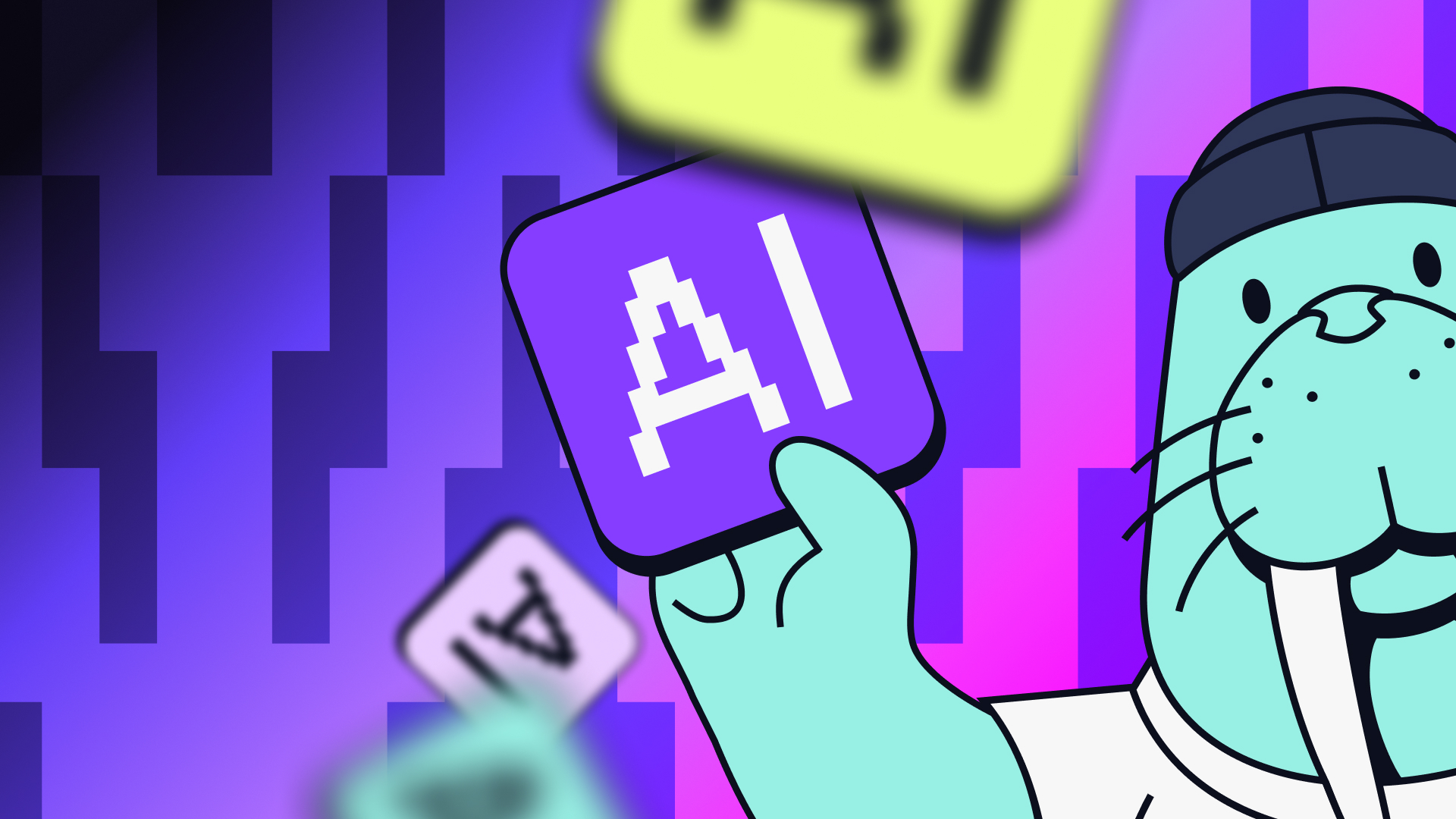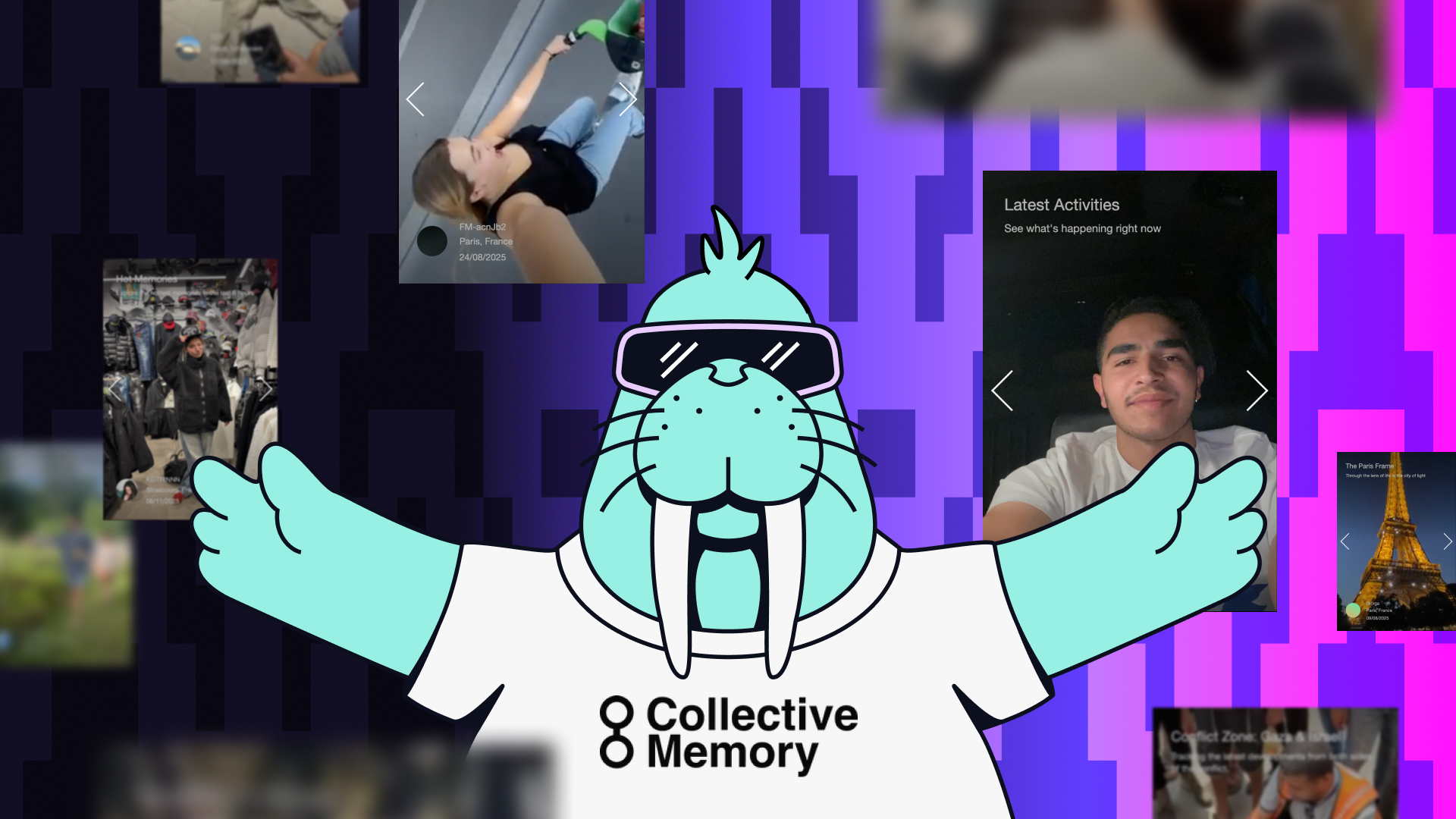Next Walrus Evolution: Quilt Redefines Small File Storage at Scale
New API unlocks a new level of efficiency, empowering builders to create powerful applications with optimized costs for files of any size.
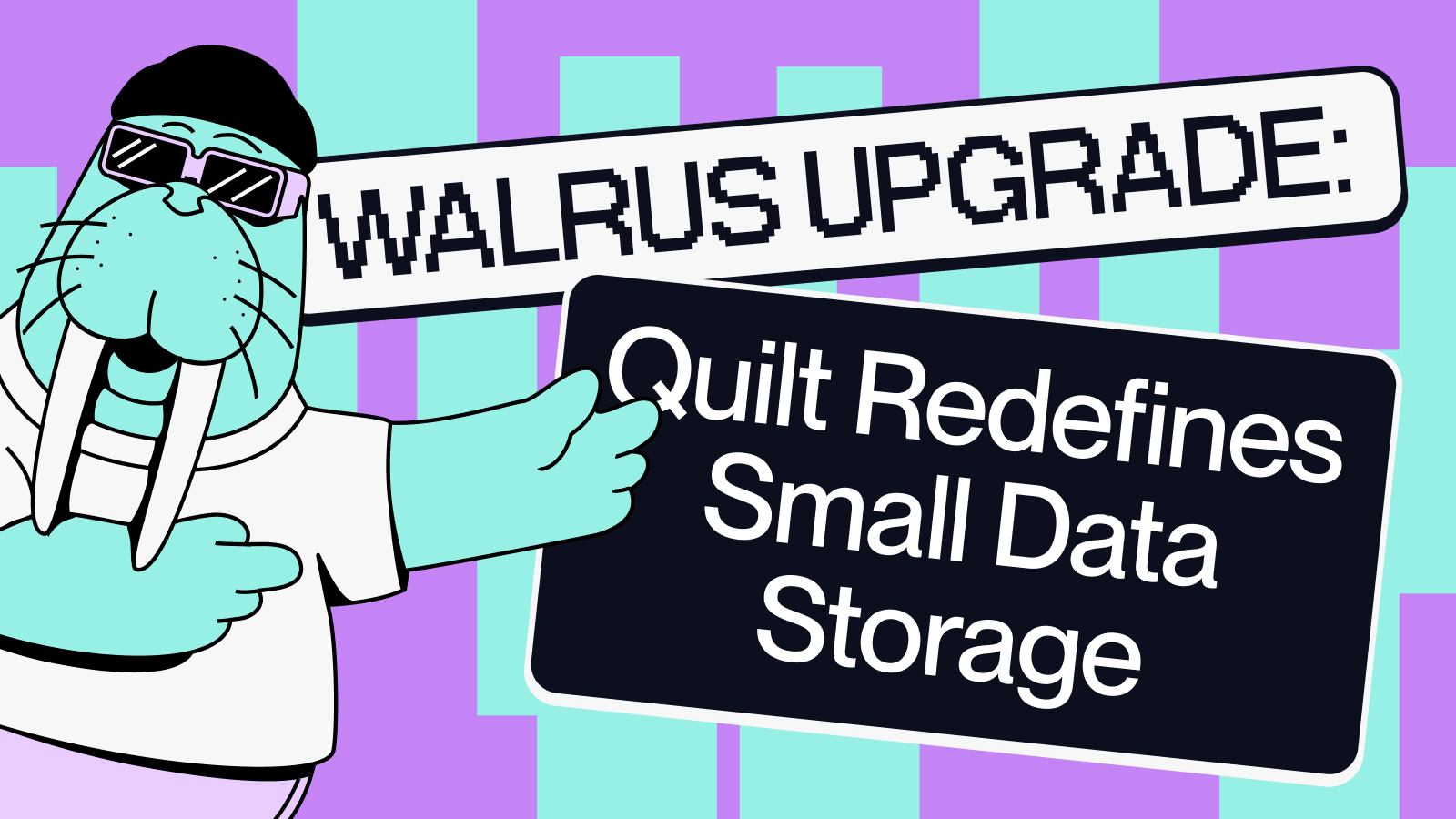
In the three months since Walrus’s Mainnet launch, we've been blown away by the significant community adoption and the innovative ways builders are using Walrus. As the global data layer for onchain builders, Walrus is already home to 800+ TBs of encoded data, stored across 14 million blobs, backing hundreds of projects building on Walrus.
Driven by a growing dissatisfaction with the limitations of existing solutions, leading projects are migrating to Walrus for its fast, dynamic, verifiable, and efficient decentralized data infrastructure—from the Pudgy Penguins digital media IP to Itheum’s AI agent file tokenization, news outlet Unchained’s digital media library to io.net’s decentralized compute for AI and ML, the 3DOS 3D printing design library to Decrypt’s news archive.
But Walrus is not just growing, it’s evolving. We are marching forward with our mission to empower even more builders to do more with their data.
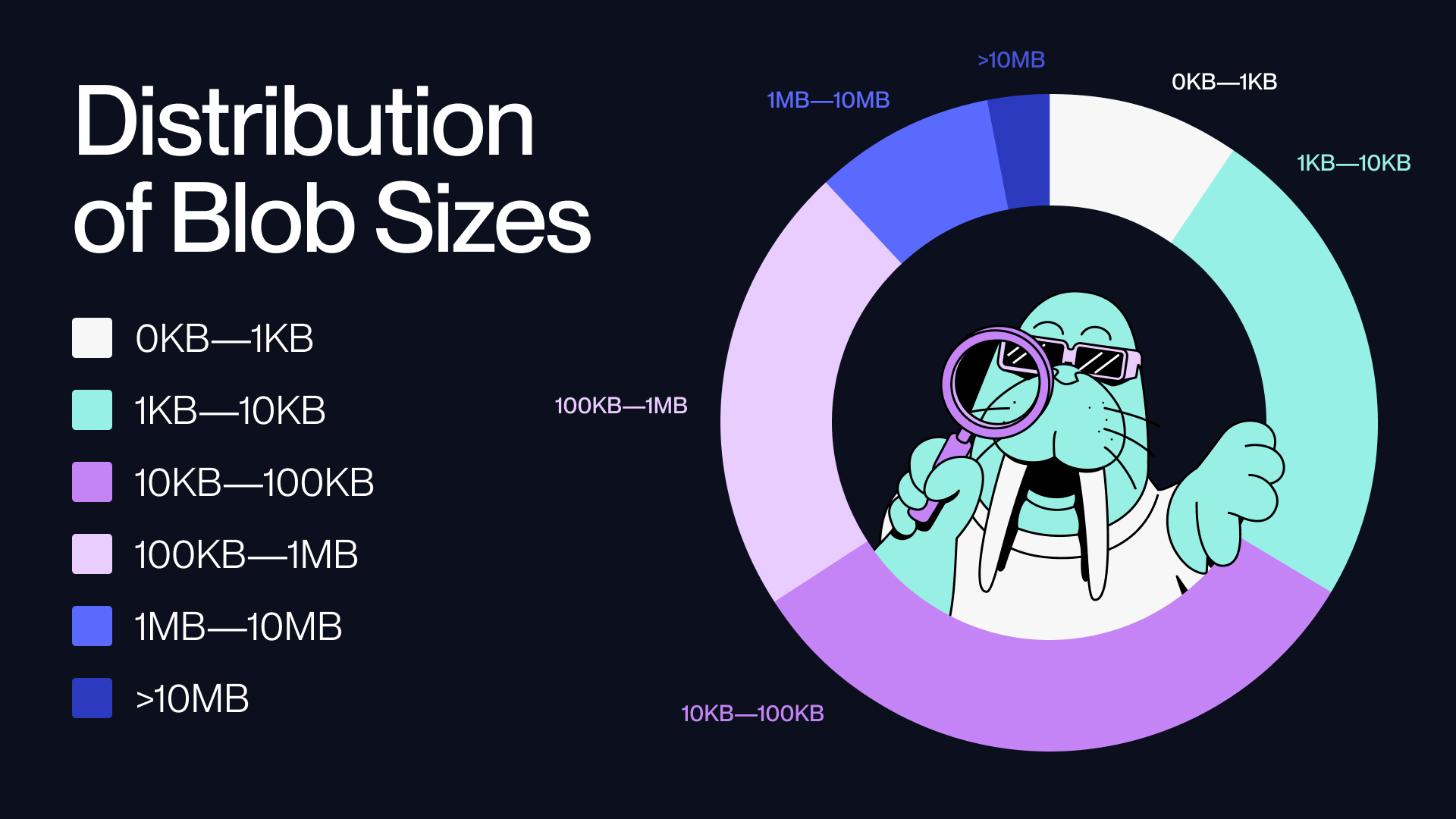
There is already substantial demand for both small and large file storage on Walrus. Users who need to store numerous small files have to bundle files themselves to reduce the overhead cost of saving many small files, which creates extra data management overhead and complexity. We built Quilt to eliminate that step, providing a convenient and Walrus-native way to make small file storage efficient and natural for every builder.
Introducing Quilt
Today, Walrus is launching Quilt: a Walrus batch storage solution that makes it intuitive and easy to achieve optimal economics when storing large volumes of small files, such as NFT collections, documents, AI communications data, and log data.
Today’s builders require a single, robust platform for all their data management needs. While Walrus was first built to solve for the limitations of large file storage, with the launch of Quilt, we’re completing our vision to empower all builders with a single, versatile platform that's hyper-optimized for every kind of data—big or small.
“Our vision has always been to empower builders with a foundational data layer for the onchain world," said Rebecca Simmonds, Managing Executive of the Walrus Foundation. "The launch of Quilt represents a new expansion of that vision. By delivering a native solution for high-volume, small-file storage applications that bundle data through a seamless experience, we are unlocking powerful new efficiencies and economic models for all developers. The same platform that seamlessly handles large media can now power the next generation of messaging apps and dynamic NFT collections at scale.”
What is Quilt?
Quilt is a batch storage solution with an intuitive API, designed to make storing and accessing large numbers of small files on Walrus both incredibly convenient, efficient, and cost-effective.
Instead of saving each file separately, Quilt groups many small files into a single unit, reducing overhead and costs by approximately 106x for 100KB blobs and 420x for 10KB blobs. Using Quilt will also reduce any SUI-denominated gas fees associated with Walrus storage transactions.
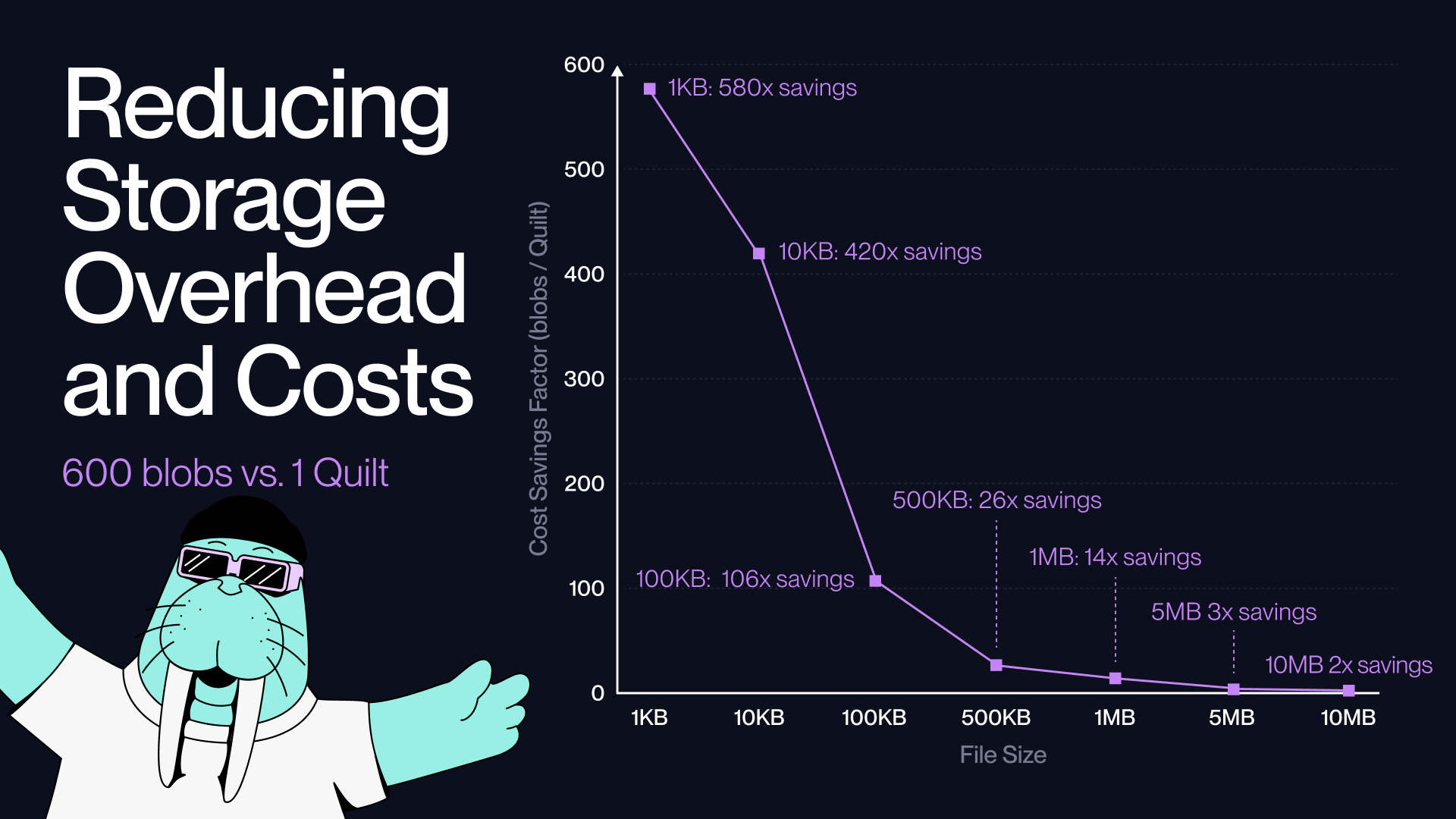
Leading projects are already leveraging Quilt during its development and testing phases to optimize their storage architecture, unlocking significant cost savings and performance gains.
- Tusky, a decentralized, privacy-first file storage platform that improves on centralized products like Dropbox or Google Drive, handles a wide spectrum of file sizes uploaded by users. Quilt makes it efficient and convenient for Tusky’s architecture to manage small files, even during periods of high volume—enhancing the performance of Tusky’s app for users and reducing costs.
"Tusky is handling files of all sizes on a daily basis, from tiny files in the KB to large media files several GB in size,” said Pascal Barry, Co-Founder & CEO of Tusky. “Quilt has been a game changer for handling those smaller files. The API provided a straightforward way to bundle them, which contributed to an order of magnitude increase in efficiency at the publisher level."
- Gata, which is building an open execution infrastructure for AI, faces the challenge of supporting the many small-sized file uploads required to build and maintain the massive datasets used for AI training. Using the Quilt API, Gata can group these small files into a single storage unit using an intuitive API workflow, instead of manually bundling files. This approach—which preserves individual ownership and access control—allows Gata to significantly reduce transaction fee spending for agents on its platform through an easy, efficient, and natural solution.
In addition to Walrus’s decentralized infrastructure, which makes data fast, dynamic, and verifiable, Quilt makes Walrus an ideal storage choice for applications that store many small files, like:
- User-generated content from social or chat apps
- AI agent communications and sensor data
- NFT collection media and metadata
Why Quilt is a game-changer for builders
- Intuitive API: Quilt provides a Walrus-native API for grouping and managing a large number of small files, alleviating developers from having to manage custom batching schemes on their own.
- Efficient data management: Quilt allows you to bundle related small files, such as NFTs, logs, or media, into a single unit natively within Walrus, making them easier to organize and manage.
- Lower costs at scale: Quilt reduces storage overhead by batching small files into a single unit, making Walrus a more cost-effective solution for applications managing high volumes of small data.
- Nimble file access: Unlike custom application-side bundling or archiving solutions, Quilt preserves the ability to directly access files (or patches) within the Quilt. This means that interactive applications can still retrieve a single file or patch at low latency and high speed, without having to ‘unbundle’ the Quilt first.
- Built-in metadata for smarter retrieval: Quilt enables the storage of immutable, custom Walrus-native metadata (including tags and IDs) alongside each blob in the Quilt. This makes it easier to search, sort, and retrieve files directly, without relying on onchain metadata.
How does Quilt work?
Data storage involves a degree of encoding overhead for each individual file and using Quilt minimizes the encoding overhead associated with storing small files (under 10MB). This unlocks significant efficiency gains when managing large volumes of small files, providing optimal storage across a range of file sizes.
Quilt bundles multiple small files (up to ~660 files per Quilt) into a single ‘Quilt,’ significantly reducing storage overhead and lowering costs.
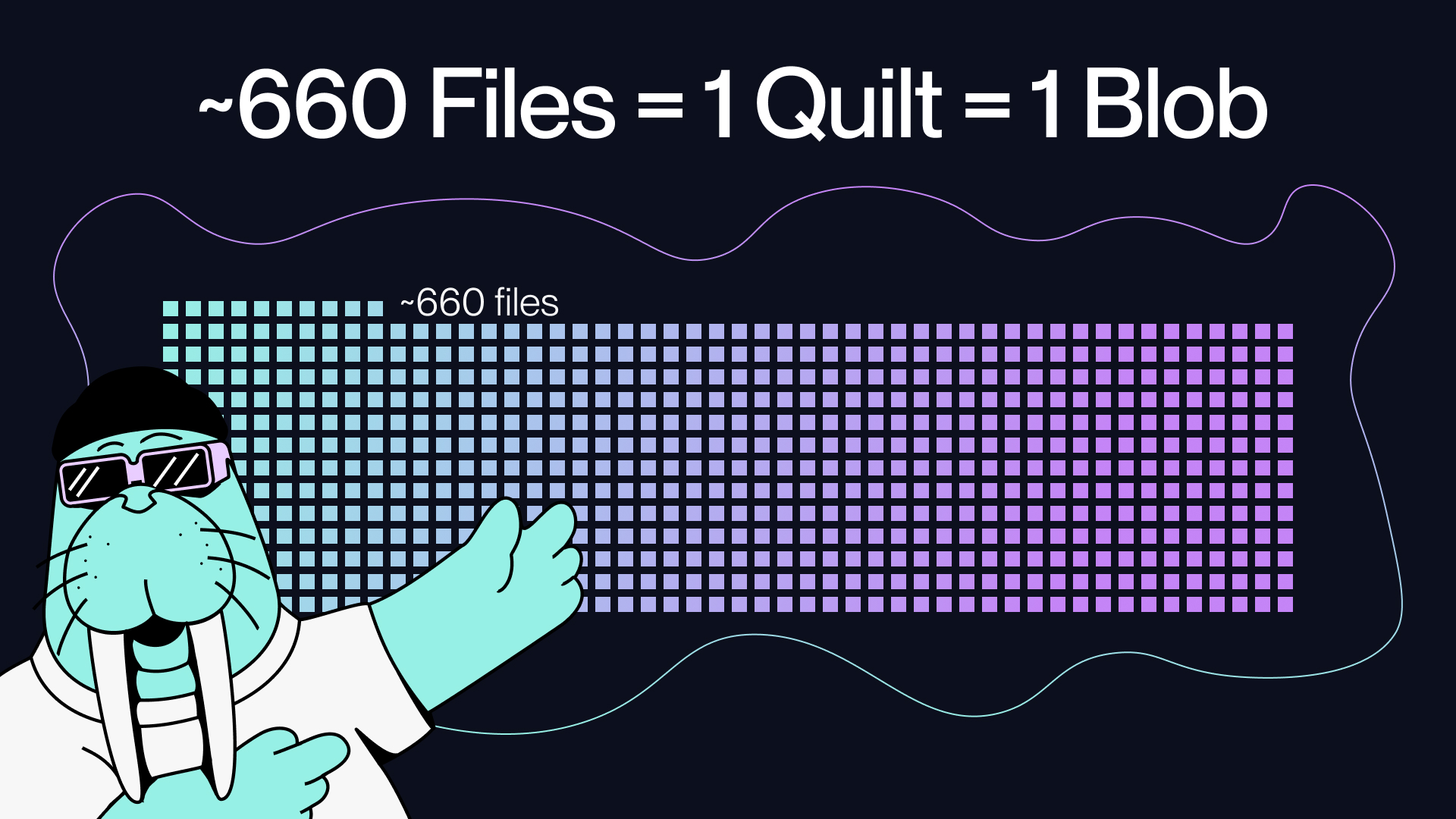
Although stored together as one unit, each file within a Quilt can be accessed individually without needing to download the entire Quilt. This makes data retrieval latency from a Quilt comparable to (or lower than) that of whole blob storage, providing the cost savings of batching with the speed and convenience of individual access.
Consider a builder getting ready to launch an NFT collection, who values decentralized infrastructure and needs reliable, cost-efficient access:
- Before Quilt: Storing 600 small images for your NFT project meant making 600 separate storage operations, which creates significantly more storage overhead than a single large operation. To address this, builders have to manually batch files into one storage operation, adding extra effort and overhead. Retrieving one NFT image is also more complex as builders need to retrieve the entire batch first.
- With Quilt: You can now batch all 600 images into a single Quilt through a Walrus-native API, dramatically cutting storage overhead without increasing development and operational burden. You can tag each image with its traits (e.g., "color: blue," "accessory: hat") and quickly retrieve the specific image you need, without downloading the entire batch.
The future of data is built on Walrus: Get started with Quilt
The launch of Quilt is another step in Walrus’s commitment to make data fast, dynamic, and verifiable—empowering developers and users to control and create value from their data.
Quilt is live starting today on Walrus Testnet with the 1.29 release and is expected to go live on Walrus Mainnet July 30th, 2025 when version 1.29 goes to Mainnet.
Dig into the Quilt resources to start testing how Quilt can unlock new efficiency for your application:
- Learn about Quilt in the developer guide
- Try the Mysten Labs Testnet aggregator and publisher API to test Quilt in a live environment. See the Quilt HTTP API documentation here.
- Try Quilt in CLI mode and soon in the Walrus Typescript SDK
We’re excited to see what the community creates with Quilt. Join the Walrus developer Discord for support and to share what you’re building!


